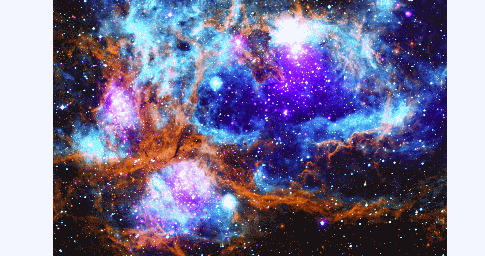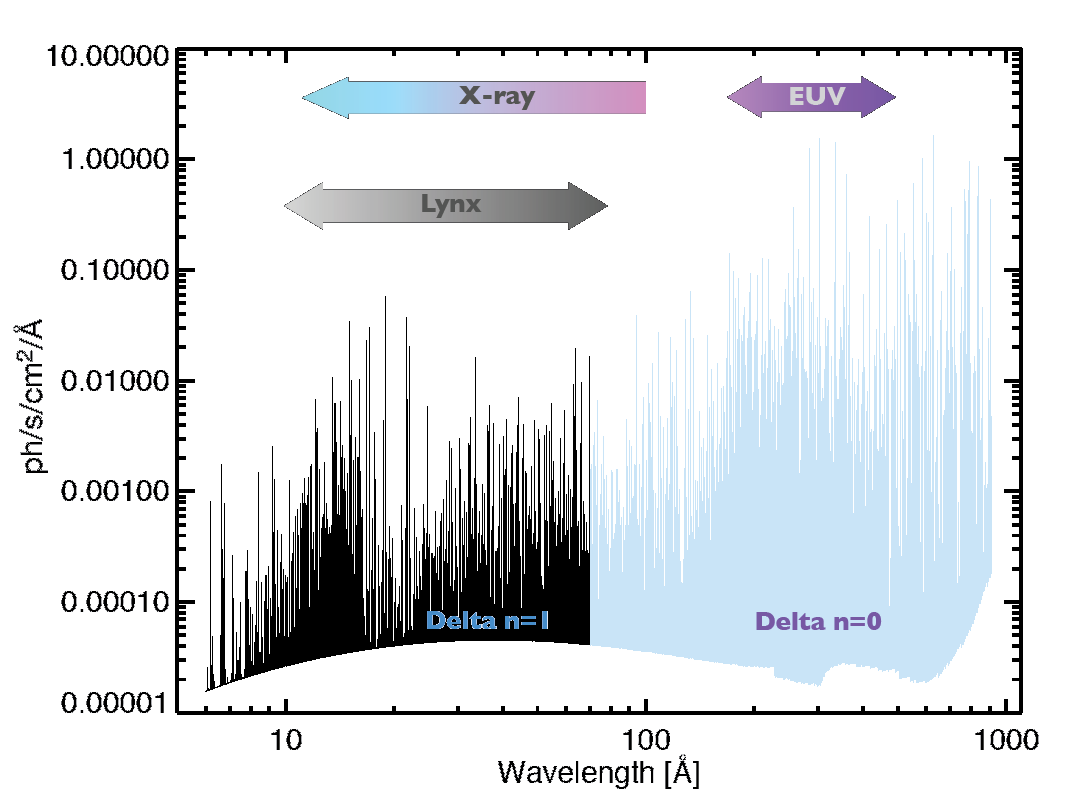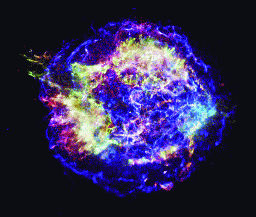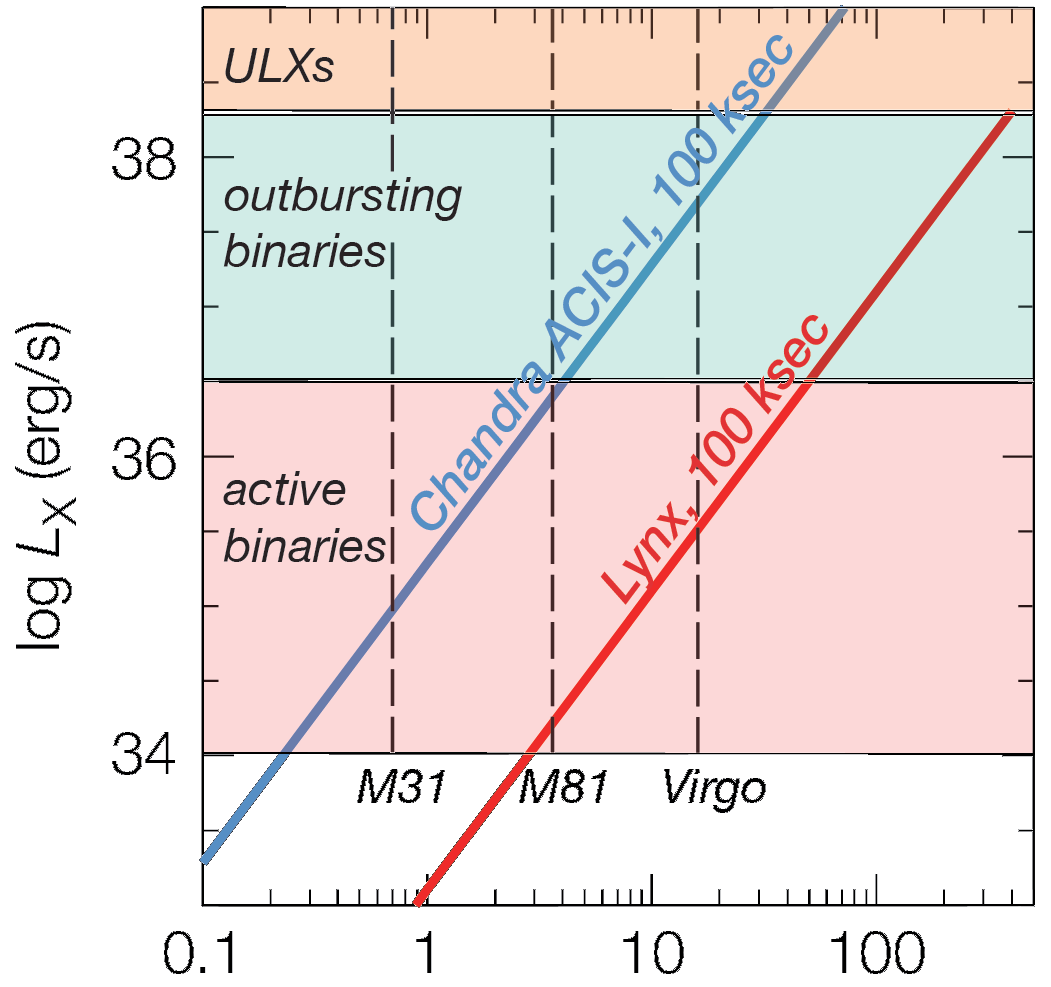
Lynx will greatly expand our X-ray grasp throughout the Milky Way and nearby galaxies. It will be the first to probe in depth the high-energy processes that reflect the workings of stars, their planets, and their interactions with their environment.


Substantial X-ray activity is an unambiguous marker for young stars. Combined X-ray and infrared data tell us when protoplanetary disks dissipate. Diffuse X-ray emission traces feedback processes.
Chandra sensitivity reaches across the stellar mass scale in young star clusters only out to the Orion Nebula at 410 pc. ATHENA will be source confused in cluster cores beyond 250 pc. Only Lynx will reach into very active and massive OB clusters as far away as the Carina-Sagittarius arm of the Milky Way. Lynx can study regions beyond the cluster cores, such as NGC 6357 shown above, as far away as 5000 pc.
Lynx topics: X-rays from protostars; protoplanetary disk dissipation time scales; census of young stars in clusters of different types; dust grain properties; diffuse ISM emission and feedback from stellar winds and supernovae.

Stellar coronal activity and flaring are ubiquitous. Lynx will provide the first precise diagnostics of temperature, electron density, flow velocities, and sizes of emission regions in coronal structures. Lynx will dramatically improve our knowledge of stellar XUV flux and its potentially devastating consequences for planetary atmospheres, liquid water, and thereby habitability. Lynx will reach as far as the orion nebula for detailed studies of stellar coronae, spanning the full range of stelar types and stellar ages.
Additional topics for Lynx: impacts of X-ray flares on protoplanetary disks including their chemical makeup in conjunction with ALMA; stellar wind measurements via charge exchange with the ISM; transit spectroscopy of superearths around M-dwarf stars; coronal mass ejections; physics of accretion onto young stars; dynamos in pre-main sequence and low-mass main sequence stars.

For Milky Way SNRs, Chandra has resolved thin shocks where cosmic rays are accelerated, mapped ejecta distriguions to constrain explosion processes, and uncovered a young neutron star in Cas A leading to unique insights into its equation of state.
The Lynx microcalorimeter will produce 3D maps of dozens of remnants, revolutionizing constraints from SNRs on the explosion physics. Lynx will resolve the population of LMC and SMC remnants and establish establish parent SN types within the Local Group, providing a census of stellar explosions in different metallicity environments. It will detect numerous young neutron stars currently missed due to lack of sensitivity. Spectral studies of recent core collapse SNe within about 10 Mpc will probe the circumstellar material ejected in the critical few thousand years preceding explosion.
Additional topics for Lynx: non-thermal physics in Milky Way SNRs and pulsar wind nebulae (PWNe); conversion of pulsar spin-down power to particle outflows; SN 1987A evolution through it's circumstellar ring and searches to unveil it's neutron star.

X-ray binary (XRB) populations are shaped by stellar and binary evolution, so observations can test key model ingredients such as common envelope phase and supernova kicks. Evolutionary paths for some classes of gravitational wave sources, such as NS-NS mergers, almost certainly pass through a high-mass X-ray binary stage.
Chandra observations of nearby galaxies mostly probe the upper end of the XRB luminosiy function so lack the range to discriminate among various models. Lynx will reach down to luminosities 100 times fainter than Chandra; thereby providing the needed dynamic range. For a given luminosity, Lynx will cover about 1000 times greater volume, increasing the number of galaxies to build up samples of rare objects.
Topics for Lynx: XRB populations in dozens of nearby galaxies down to X-ray luminosities of 1034 to 1035 erg-s1-; binary evolution models, supernova kicks, and effects of metallicity on XRB formation; multi-wavelength counterparts to extragalactic XRBs; compact object classification.